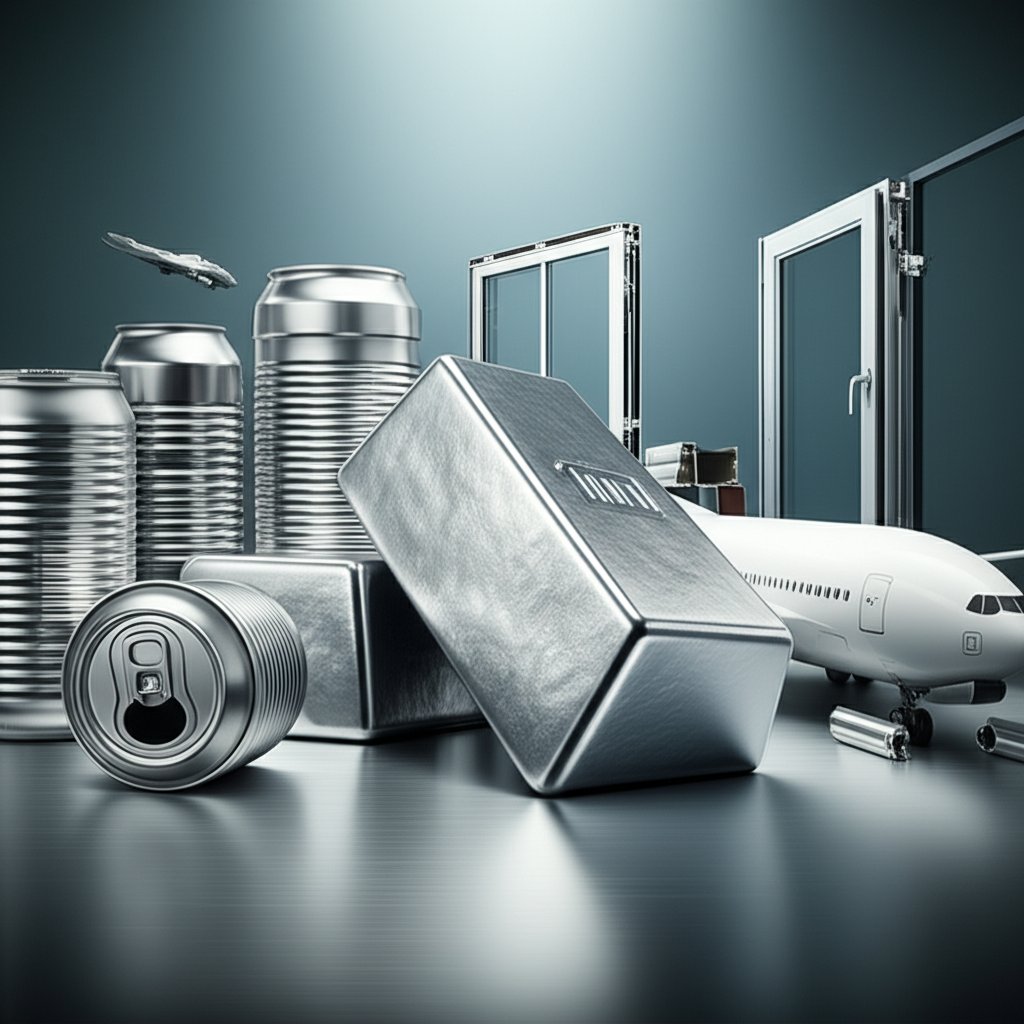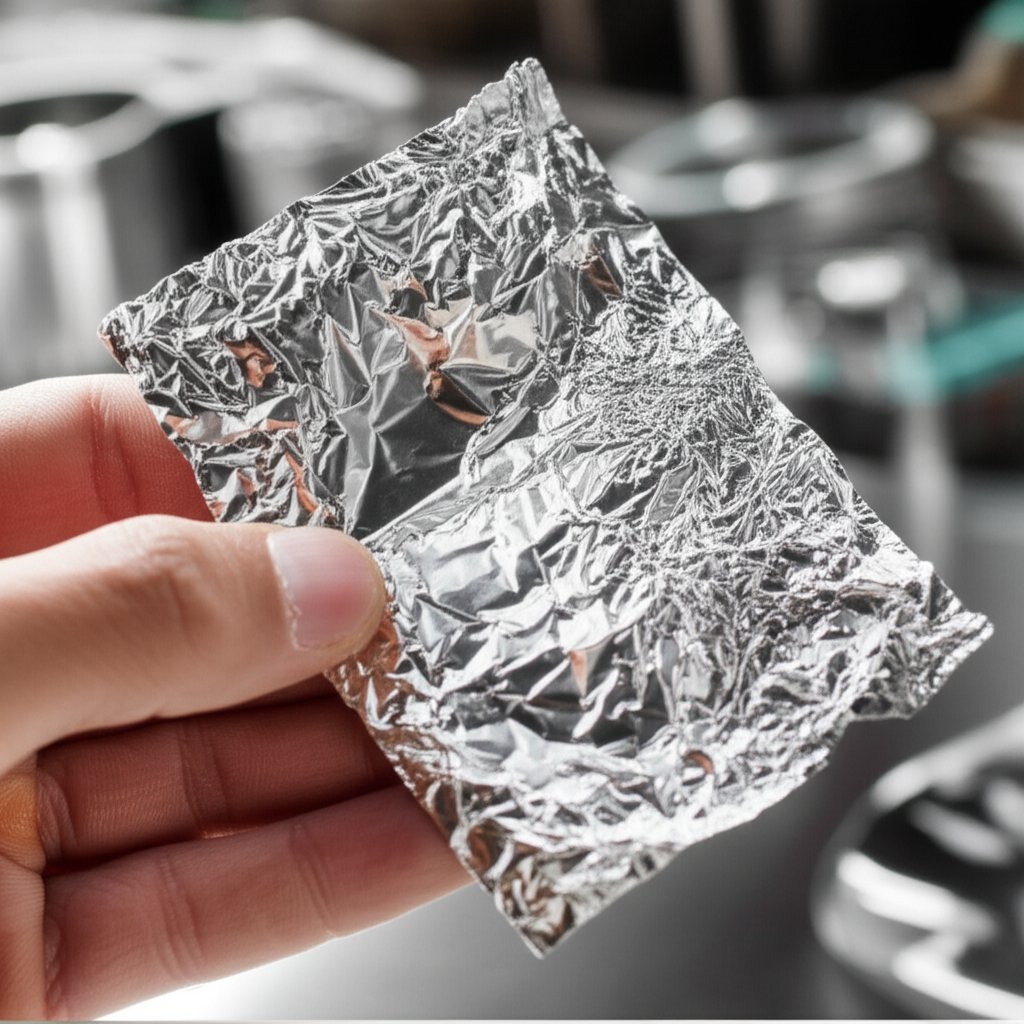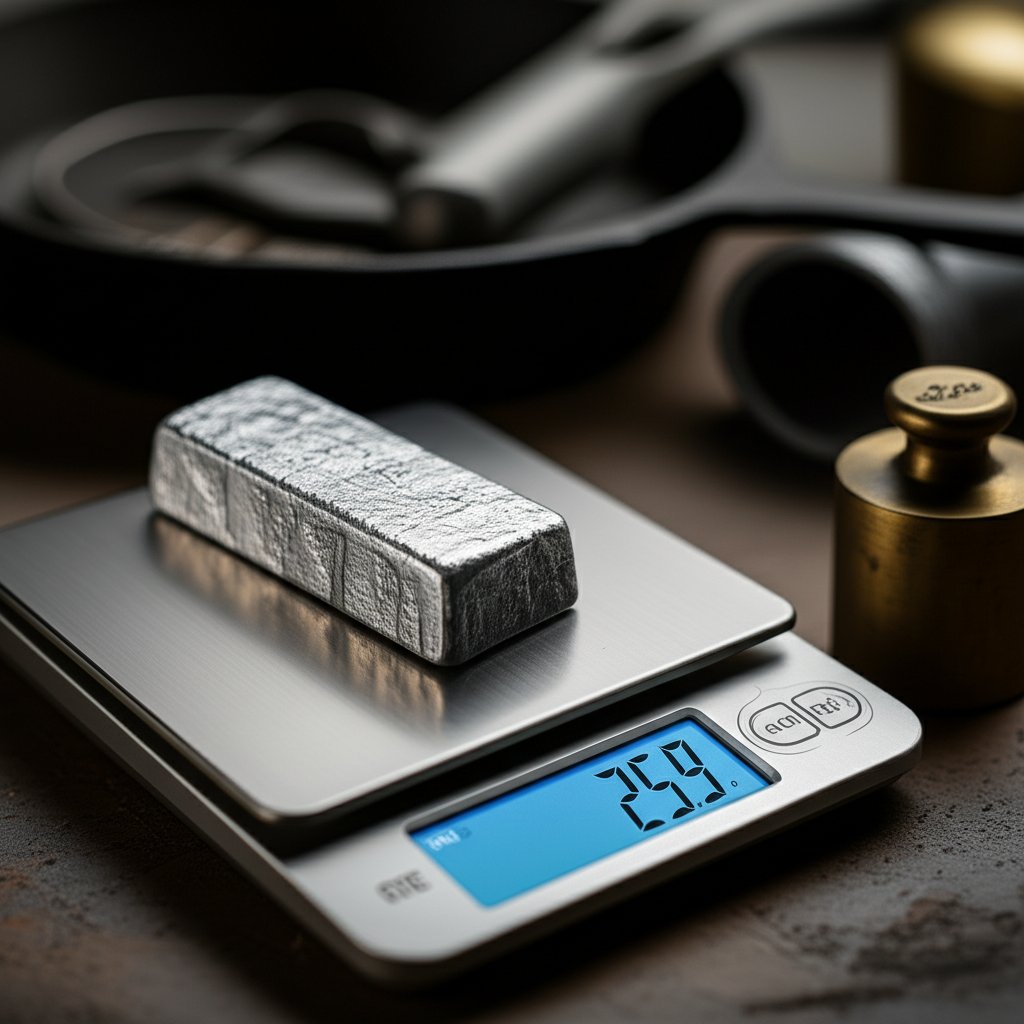
Walk into any modern kitchen, board an airplane, or open a can of soda—chances are, you’re interacting with aluminum. This silvery-white material is everywhere: in buildings, vehicles, packaging, electronics, and even in the wiring that powers your home. With such a wide range of uses, it’s easy to take aluminum for granted. But if you’ve ever wondered, is aluminum a metal, or perhaps, is aluminum a metal or nonmetal, you’re not alone. The question pops up often, especially since aluminum stands out for being lightweight, nonmagnetic, and highly resistant to corrosion—qualities not always associated with traditional metals.
So, why does this question matter? Understanding aluminum’s true nature isn’t just a matter of scientific curiosity. It helps you make informed choices about materials for construction, transportation, packaging, and countless other applications. Whether you’re a student, a professional, or simply curious, knowing the answer can clarify why aluminum is favored in so many industries and what sets it apart from other elements.
By the end of this guide, you’ll have a comprehensive understanding of aluminum’s scientific classification, its unique properties, and why it’s one of the most indispensable materials in our everyday lives. Let’s start by answering the core question: is aluminum a metal?

When you hold a sheet of aluminum foil or spot the shiny frame of a modern train, you might wonder: is aluminum a metal—yes or no? The answer is a resounding yes. But what makes aluminum a true metal, and why does this matter for everything from aircraft to kitchen gadgets? Let’s break down the science and see how aluminum measures up to the classic definition of a metal.
Sounds complex? Actually, metals share a handful of defining traits you can spot in everyday life. Here are the core aluminum metal properties that scientists use to classify an element as a metal:
Let’s see how aluminum performs in each of these areas:
Despite these clear-cut traits, some confusion lingers. Why? Aluminum is lightweight, nonmagnetic, and highly resistant to corrosion—qualities that set it apart from heavier, rust-prone metals like iron. But these differences don’t change its fundamental nature. In fact, its corrosion resistance comes from a self-healing oxide layer, not from being "non-metallic."
For a deeper dive into the science behind aluminum’s classification, manufacturing, and unique advantages, you can explore this comprehensive resource: Is Aluminum a Metal? Unveiling the Truth Behind This Versatile Element.
So, is aluminum a metal? Yes—by every scientific measure. Its electrical and thermal conductivity, malleability, ductility, luster, and solid state at room temperature all check the boxes for metallic elements. As you continue reading, you’ll discover how these properties distinguish aluminum from nonmetals and metalloids, deepening your understanding of its place in the world of materials.
Ever found yourself wondering, is aluminum a metal or metalloid? Or maybe you’ve heard someone suggest it shares traits with nonmetals. These questions pop up because aluminum sits at an interesting crossroads on the periodic table, showing off a blend of properties that can seem a bit confusing at first glance. Let’s break down the basics and see exactly where aluminum fits—and why.
Sounds complex? Not really. Most elements fall into one of three broad categories:
So, when you look at aluminum, where does it fit? Let’s compare some key properties:
| Property | Aluminum | Metalloids (e.g., Silicon) | Nonmetals (e.g., Sulfur) |
|---|---|---|---|
| Electrical Conductivity | Excellent | Moderate | Poor |
| Thermal Conductivity | High | Moderate | Low |
| Luster (Shininess) | Shiny, metallic | Dull to semi-shiny | Dull |
| Malleability & Ductility | Highly malleable and ductile | Brittle or semi-malleable | Brittle |
| State at Room Temp | Solid (metallic) | Solid (but not metallic) | Solid, liquid, or gas (nonmetallic) |
| Chemical Reactivity | Forms basic oxides; reacts with oxygen to create a protective oxide layer | Varies; can form both acidic and basic oxides | Often forms acidic oxides; may not react readily |
At first glance, you might notice that aluminum’s strong conductivity and shiny appearance scream “metal.” But here’s where things get interesting: aluminum can sometimes form covalent compounds (typically a nonmetal trait), and it’s less dense than many familiar metals. These quirks have led some to wonder if it shares enough in common with metalloids to blur the lines.
The truth is, while aluminum does have a few features that overlap with metalloids—like its ability to form certain covalent compounds—its core behaviors are unmistakably metallic. For example, its malleability, excellent conductivity, and tendency to lose electrons in reactions are defining features of metals (Xiaaluplate).
When you compare aluminum vs nonmetals, the differences become even clearer. Nonmetals are typically poor conductors, dull, and brittle—think of sulfur or phosphorus. Aluminum, on the other hand, is used in electrical wiring, shines when polished, and can be rolled into ultra-thin foil. The contrast couldn’t be starker.
So, is aluminum a metal or metalloid? Science says aluminum is a metal, through and through. Its core properties—high conductivity, metallic luster, malleability, and chemical behavior—set it apart from both metalloids and nonmetals. While it might borrow a few tricks from its neighbors on the periodic table, aluminum’s true nature is unmistakably metallic. Next, let’s see how its place on the periodic table further confirms this classification.
If you’ve ever glanced at the periodic table and wondered, is aluminum a metal on the periodic table, you’re asking a smart question. The periodic table isn’t just a list of elements—it’s a map that tells us about an element’s structure, properties, and how it behaves in the real world. Let’s break down exactly where aluminum sits and what that means for its identity as a metal.
First, let’s get specific. Aluminum’s chemical symbol is Al, and its atomic number is 13 (ChemistryTalk). This means each aluminum atom has 13 protons in its nucleus. On the periodic table, you’ll find aluminum in:
Why does this matter? The group and period tell you a lot about how aluminum behaves. Group 13 elements, including boron, gallium, indium, and thallium, share similar chemical characteristics—most notably, they all have three valence electrons. This is key to how these elements form compounds and react with others.
When you look at the periodic table, you’ll notice a big block of transition metals in the center. Aluminum, however, sits just to the right of these, in a category often called “post-transition metals” or “other metals.” These metals aren’t quite as dense or hard as transition metals, but they’re still unmistakably metallic in nature. For aluminum, this means:
Aluminum’s place in the p-block is more than just a technical detail. Elements in the p-block have their outermost electrons in the p orbital, which affects how they bond and interact. For aluminum, this means it:
These features are classic hallmarks of metals, reinforcing aluminum’s classification. While some p-block elements are metalloids or nonmetals, aluminum’s behavior—especially its ability to conduct electricity and its metallic luster—puts it firmly in the metal category (WebElements).
| Property | Aluminum |
|---|---|
| Chemical Symbol | Al |
| Atomic Number | 13 |
| Group | 13 (Boron group) |
| Period | 3 |
| Block | p-block |
| Classification | Post-transition metal / Other metal |
So, in terms of aluminum periodic table classification, it’s clear: aluminum is a metal, located in the p-block, and grouped with other elements that share its metallic traits. Its position on the periodic table not only confirms its status as a metal but also helps explain its unique combination of lightness, strength, and reactivity. Next, we’ll explore how these traits influence aluminum’s magnetic behavior—and clear up some common misconceptions along the way.

Ever tried sticking a fridge magnet to a sheet of aluminum foil or a soda can? You’ll notice it doesn’t cling the way it does to your refrigerator door. This simple experiment leads to a common question: is aluminum a magnetic metal? The answer is more nuanced than a simple yes or no, but for most practical purposes, aluminum is considered nonmagnetic.
Let’s break it down. In the world of materials science, metals can be classified by how they respond to magnetic fields. The most familiar magnetic metals—like iron and steel—are ferromagnetic, meaning they are strongly attracted to magnets and can retain magnetic properties. Aluminum, however, is different. It is classified as paramagnetic, which means it exhibits only a very weak attraction to magnetic fields—so weak, in fact, that it’s almost impossible to notice in everyday life (Industrial Metal Service).
So, is aluminum nonmagnetic? In the sense that it does not stick to magnets or interfere with magnetic fields in any significant way, yes—aluminum is nonmagnetic for all practical uses.
Sounds complex? Here’s the simple version: Aluminum’s atoms have unpaired electrons, which is the root of its paramagnetic behavior. When placed in a strong magnetic field, these unpaired electrons align very slightly with the field, causing a tiny, temporary attraction. But as soon as you remove the magnet, this effect disappears instantly. That’s why aluminum doesn’t behave like the magnets you find in your kitchen or toolbox (thyssenkrupp Materials).
Let’s visualize this with a quick checklist:
Imagine you’re designing electronic devices, medical equipment, or even high-speed trains. In these settings, you want materials that won’t disrupt sensitive magnetic fields or interfere with precise instruments. Aluminum’s nonmagnetic nature is a huge benefit:
Here’s a cool twist: If you drop a strong magnet through an aluminum tube, it falls much more slowly than you’d expect. Why? The moving magnet induces an electric current in the aluminum, which creates its own temporary magnetic field that resists the magnet’s motion (a phenomenon called Lenz’s Law). But even here, aluminum itself isn’t magnetized—it’s just responding to the changing magnetic field in a unique way.
To sum up, while aluminum is technically paramagnetic, it is functionally nonmagnetic for almost every application. This property, combined with its lightness and resistance to corrosion, helps explain why aluminum is so widely used where minimal magnetic disturbance is essential. Next, we’ll see how aluminum’s lack of iron content further shapes its classification as a non-ferrous metal—and why that matters for industry and innovation.
Ever wondered why aluminum is so popular in everything from airplanes to soda cans? The answer lies in its unique status as a non-ferrous metal. But what does that really mean—and why does it matter for modern industry and innovation? Let’s break it down in simple terms.
When you hear the term "ferrous metal," think iron. Ferrous metals contain a significant amount of iron in their composition, making them prone to rust and usually magnetic. Common examples include steel and cast iron. On the other hand, non-ferrous metals have little to no iron—usually less than one percent by weight (Metal Supermarkets). This simple distinction leads to some key differences:
So, is aluminum a non ferrous metal? Absolutely. Aluminum contains no significant iron and does not exhibit magnetic properties under normal conditions. That’s what sets it apart from most steels and irons you might encounter.
Aluminum stands out as one of the world’s most widely used non-ferrous metals. Here’s why:
Why do engineers and designers favor non-ferrous metals? Here are some aluminum non ferrous advantages that make a real difference:
When you need high-quality, precision-engineered aluminum profiles, working with an experienced manufacturer is key. Anhui Shengxin Aluminum stands out as a top provider in the industry, offering a full spectrum of non-ferrous aluminum solutions. With over 100 advanced production lines—including extrusion, anodizing, powder coating, and deep processing workshops—Shengxin delivers aluminum profiles for everything from energy-efficient building facades to high-tech transportation and industrial systems. Their expertise, scale, and commitment to quality make them a trusted partner for projects where performance and reliability matter most.
Understanding why aluminum is classified as a non-ferrous metal not only clarifies its scientific standing but also highlights the real-world benefits that drive its widespread use. Next, we’ll explore how aluminum’s density compares to other metals—and why it isn’t considered a heavy metal.

When you hear the phrase "heavy metal," what comes to mind? Maybe you think of lead weights, mercury thermometers, or even the music genre. But in science and engineering, the term “heavy metal” has a specific meaning—one that’s closely tied to density. So, is aluminum a heavy metal? Let’s break it down in simple terms and see how aluminum stacks up against other metals.
In scientific contexts, a heavy metal is generally defined by its relatively high density, atomic weight, or atomic number. While there’s no universally accepted cutoff, many sources consider metals with a density above 5 g/cm³ as “heavy.” Common examples include lead, mercury, tungsten, and gold (Wikipedia: Heavy metals).
So, where does aluminum fit in this spectrum? Aluminum’s density is about 2.7 g/cm³ (Unionfab). To put this in perspective, let’s look at a side-by-side comparison:
| Metal | Density (g/cm³) | Classification |
|---|---|---|
| Aluminum | 2.7 | Light metal |
| Magnesium | 1.74 | Light metal |
| Titanium | 4.5 | Light metal |
| Iron | 7.87 | Heavy metal |
| Copper | 8.96 | Heavy metal |
| Lead | 11.34 | Heavy metal |
| Mercury | 13.53 | Heavy metal |
| Gold | 19.3 | Heavy metal |
As you can see, aluminum is much lighter than traditional heavy metals. In fact, it’s the lightest among many commonly used engineering metals (Unionfab).
Imagine you’re building an airplane, a car, or even a bicycle. Would you rather use a material that’s dense and heavy, or one that’s strong but light? That’s where aluminum shines. Its low density means:
That’s why aluminum is the material of choice for applications where every ounce counts—from aerospace and automotive to packaging and electronics (WayKen).
Based on its density and scientific classification, aluminum is not a heavy metal. Instead, it belongs to the family of lightweight metals—a key advantage for modern engineering. Its low density, combined with strength and corrosion resistance, makes it a go-to material for industries that demand both performance and efficiency. As we move forward, let’s explore how aluminum’s classification as a lightweight, post-transition metal shapes its role in today’s high-tech world.
When you first scan the periodic table, it’s easy to wonder: is aluminum a transition metal? After all, it sits just next to the block of transition metals and shares some metallic traits. But the science behind element classification is more precise—and understanding it clears up any confusion about where aluminum really belongs.
Let’s start with the basics. Transition metals occupy the central block of the periodic table (groups 3–12). Chemists define them by two main features:
Think of classic transition metals like iron, copper, or nickel. These elements can switch between multiple oxidation states (like +2 and +3), which gives them their rich chemistry and makes them useful in everything from pigments to catalysts.
So, where does aluminum stand? Here’s where the details matter:
Imagine you’re sorting a toolbox: transition metals are like adjustable wrenches (lots of settings), while aluminum is more like a simple screwdriver—reliable, but with only one main function.
So if it’s not a transition metal, what is aluminum? You’ll often see it called a post-transition metal or “other metal.” Here’s what that means:
Aluminum’s unique chemistry—its strong metallic character, lightweight nature, and single oxidation state—fits this group perfectly. Unlike transition metals, it doesn’t form colorful compounds or act as a catalyst in the same way. Instead, its value lies in its lightness, conductivity, and corrosion resistance.
| Feature | Transition Metals | Aluminum |
|---|---|---|
| Block on Periodic Table | d-block | p-block |
| Electron Configuration | Partially filled d-orbitals | [Ne]3s23p1 |
| Common Oxidation States | Multiple (e.g., +2, +3) | Primarily +3 |
| Physical Traits | Harder, denser, higher melting points | Softer, lightweight, lower melting point |
So, is aluminum a transition metal? The answer is no. Its p-block position, fixed +3 oxidation state, and unique set of properties make it a classic aluminum post transition metal. Understanding this distinction helps clarify why aluminum behaves the way it does—and why it’s so valuable for applications where lightness and corrosion resistance matter most. Next, let’s take a closer look at the physical traits of pure aluminum, including its softness and purity, and how these characteristics are harnessed in industry.

When you pick up a piece of aluminum foil or see the silvery shine of a new window frame, you might wonder—what makes aluminum so versatile, and how does its purity affect its performance? Let’s break down the pure aluminum properties that set this metal apart, and see why manufacturers often tweak its composition for specific uses.
Imagine trying to bend a metal rod by hand. With pure aluminum, you’ll notice it’s surprisingly soft and flexible compared to most other metals. This isn’t a flaw—it’s a core advantage for certain applications. The softness of aluminum means it can be easily shaped, rolled, or drawn into ultra-thin foil without cracking. But that same softness also means pure aluminum isn’t the best choice when you need high strength or rigidity.
Here are the key traits you’ll find in pure, unalloyed aluminum (AZoM):
Sounds great, right? But here’s the catch: aluminum softness can be a drawback when strength is needed. That’s why most aluminum products—like airplane parts, car frames, or heavy-duty window profiles—aren’t made from pure aluminum. Instead, manufacturers alloy it with elements like copper, magnesium, silicon, or zinc. These additions dramatically boost strength, toughness, and wear resistance, while still retaining aluminum’s lightness and corrosion resistance (AZoM).
For example, the tensile strength of pure aluminum is around 90 MPa, but some aluminum alloys can reach over 690 MPa. This flexibility allows engineers to tailor aluminum’s properties for everything from delicate electronics to rugged construction beams.
Still, there are times when only the purest aluminum will do. High-purity aluminum (sometimes over 99.99% pure) is crucial for:
In these cases, impurities or alloying elements could reduce performance, so manufacturers go to great lengths to ensure the highest possible purity.
When industries demand both purity and precision, the expertise of your aluminum supplier matters. Anhui Shengxin Aluminum delivers high-purity, custom-engineered aluminum profiles for the most demanding sectors. Their advanced extrusion and finishing capabilities mean you get products that combine the best of aluminum’s natural softness and ductility with the strength and durability needed for real-world applications. Whether you need ultra-thin foils, intricate extrusions, or robust structural components, Shengxin’s commitment to quality and innovation ensures your aluminum profiles meet the strictest standards.
By understanding the physical traits of pure aluminum and how alloying transforms its capabilities, you can choose the right material for any project. As we wrap up, let’s summarize what makes aluminum such a unique and valuable metal in today’s world.
After exploring the science, history, and practical details, it’s time for an is aluminum a metal summary. The answer is clear: aluminum is unequivocally a metal—one that stands apart for its unique blend of properties and broad utility. Let’s quickly recap what makes aluminum so special and why it’s valued across countless industries.
Imagine designing an airplane, building a skyscraper, or packaging your favorite snack. You’d want a material that’s strong, light, corrosion-resistant, and easy to shape. That’s where aluminum shines. Its versatility is unmatched:
Aluminum’s ability to be alloyed with other elements further expands its uses, allowing engineers to fine-tune its strength, flexibility, and appearance for everything from delicate electronics to heavy-duty industrial machinery (Aluminum Association).
When your project demands reliability, precision, and innovation, working with a proven aluminum manufacturer makes all the difference. Anhui Shengxin Aluminum stands out as a trusted partner, offering advanced production capabilities, a wide range of high-quality profiles, and deep expertise across industries. From eco-friendly building solutions to custom components for rail transit and new energy vehicles, Shengxin’s commitment to quality and technical excellence ensures your aluminum needs are met—no matter how demanding the application.
In summary, aluminum’s status as a metal is not just a scientific fact—it’s the foundation of its remarkable versatility and enduring value in our modern world. Whether you’re an engineer, architect, or innovator, understanding aluminum’s properties and uses can help you unlock new possibilities for efficiency, sustainability, and design. For high-quality aluminum solutions, consider partnering with industry leaders like Anhui Shengxin Aluminum to bring your vision to life.
Aluminum is classified as a true metal. It features a silvery-white appearance, excellent conductivity, malleability, and is solid at room temperature. These characteristics firmly distinguish aluminum from nonmetals and metalloids, making it one of the most widely used metals in construction, transportation, and packaging.
Pure aluminum is a chemical element with the symbol Al and atomic number 13, meaning it is 100 percent metal when not alloyed with other elements. In practical applications, aluminum is often alloyed to enhance strength, but pure aluminum itself is not a mixture—it's a single metallic element.
Aluminum can exist both as a pure metal and as an alloy. Pure aluminum is soft and highly ductile, but for most industrial uses, it is combined with elements like copper or magnesium to form alloys that offer greater strength and durability while maintaining aluminum's lightweight and corrosion-resistant nature.
No, aluminum is not considered a heavy metal. Its density is about 2.7 g/cm³, which is much lower than that of traditional heavy metals like lead or copper. This lightweight property is why aluminum is preferred in industries where reducing weight is crucial.
Aluminum is classified as a non-ferrous metal because it contains little to no iron. This gives it key advantages: it does not rust, is nonmagnetic, and offers excellent corrosion resistance. These traits make aluminum ideal for high-performance applications in aerospace, construction, and electronics.
 Servicio en línea
Servicio en línea 0086 136 3563 2360
0086 136 3563 2360 sales@sxalu.com
sales@sxalu.com +86 136 3563 2360
+86 136 3563 2360